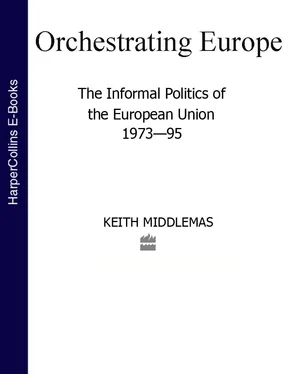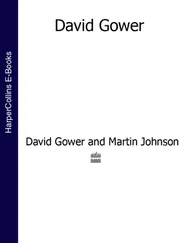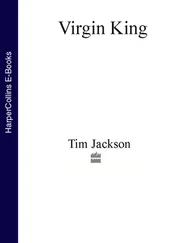The impact of all these changes was to widen the productivity gap between Europe and the USA. In industry alone, the USA had emerged from the War with double the output of 1938 and, despite the dislocation of adjusting to peacetime conditions (and a short-lived recession), had added further to this position by 1950. Without closing the gap, it was felt that Europe would be unable to repair the trade imbalance with the US and would be unable to sustain acceptable standards of welfare for its peoples. This problem was aggravated by the impact of the War on Europe’s trading relationships, both with each other and with the rest of the world.
American wartime planning had aspired to a world multilateral trade and payments system. The Bretton Woods conference, held in July 1944, decided in favour of the restoration of the gold-exchange standard (based on gold and convertible reserve currencies) but with two important safeguards. Firstly, it created the International Monetary Fund (IMF) to aid countries against speculative attack. Secondly, it agreed a set of ‘rules’ to govern international monetary behaviour. In December 1945, the US proposed complementing the arrangements for world monetary order by the creation of the International Trade Organisation (ITO) to ease trade conditions and to co-ordinate national countercyclical policies. Its constitution, in a much watered-down form, was agreed in Havana in 1948. However, the ITO never came into existence because the US Congress, unwilling to surrender so much control over its protectionist arsenal, refused its ratification. This left the temporary and far less comprehensive General Agreement on Tariffs and Trade (GATT), agreed in 1947, as the main regulatory body for commodity trade. It is important to note that in both areas, the agenda for action was a global one. There was little place for new regional discrimination and every intention to eradicate existing trade preference areas, usually between colonial and metropolitan powers. 6
Instead of a multilateral trading system, Europe’s trade and payments had returned to the pattern of bilateralism and autarky that had characterized the 1930s. Indeed the pervasiveness of frontier controls between countries and across products surpassed anything that had been seen in peacetime since the start of the free trade movement a century earlier. Europe’s commercial problems stemmed from several different sources. The effect of the dislocation of the War on many economies made it difficult to divert production to exports at the expense of investment or already low levels of consumption. Moreover, the liquidation or destruction of foreign investments which, even by 1950, were still earning 75% less in real terms than they had been in 1938, removed an important source for covering import requirements. These two developments aggravated trade imbalances but the problem was further complicated by shifts in the direction of trade. Germany had provided many countries with imports of fuel and raw materials, semi-manufactured and investment goods upon which their own industries had depended. Because German recovery was inhibited by the occupying Allies, this source of supply was much diminished. Moreover, agricultural goods, and particularly grain, were no longer available in the same quantities from eastern Europe. Indeed the only area capable of compensating for this shortfall in supply was North America. Thus the trade deficit with the dollar area increased enormously compared with before the War, at a time when the disruption of colonial economies also meant that Europe was no longer able to earn dollars from triangular trade. The scarcity of hard currencies forced countries to restrict imports and control trade through bilateral agreements, augmented with quantitative restrictions and exchange controls. The effects of these problems, and the measures chosen to cope with them, reduced the relative levels of internal trade in peacetime in western Europe to possibly their lowest point in the twentieth century. The share of internal trade as a proportion of Europe’s total imports and exports fell from almost 48% in 1938 to under 35% ten years later. 7
It was against this background that, early in 1947, there occurred a sharp deterioration in western Europe’s balance of payments. It was probably occasioned primarily by the ambitious inflationary investment plans initiated in pursuit of domestic reconstruction but was aggravated by the impact of poor harvests on Europe’s terms of trade. Yet it was this second factor, with its associated images of hunger, high prices and social discontent, that formed the prime means publicly to legitimize the massive dollar investment programme announced by the American secretary of state, General George Marshall, at a speech at Harvard University in June 1947. The announcement of the Marshall Plan has often been associated with the ‘Truman Doctrine’ of March 1947, which pledged American help to the Greek government in their struggle against the Communists in the civil war. Together, they have come to symbolize the start of the Cold War. Yet Marshall Aid marked another fundamental shift in American policy. It represented a recognition that Europe’s reconstruction could not be managed within a global, multilateral framework, but rather that the continent’s rehabilitation was a prerequisite for the functioning of wider arrangements. 8
The failure of a global strategy was underlined within months of the announcement of Marshall Aid. When, in 1945, the Anglo-American loan agreement had been signed, one of its clauses had stipulated that the United Kingdom would reintroduce sterling convertibility by mid–1947. This would allow countries to use their sterling reserves for multilateral settlements and thus reduce the pressures on the dollar. On the appointed day, supported by new loans, the British government duly announced the return to convertibility and found itself immediately confronted with a run on reserves. Within seven weeks, the experiment was abruptly curtailed. Nothing else could have demonstrated so eloquently that it was not currency or liquidity that the system needed, but one currency in particular (the US dollar) and in one area (western Europe).
Of course there was a realization that special transient arrangements would be needed to assist recovery from wartime destruction. In November 1943, for example, forty-four governments created the United Nations Relief and Rehabilitation Administration (UNRRA) for the provision of immediate relief in the form of food, clothing and shelter, as well as the raw materials and machinery necessary to restart agricultural and industrial production. In mid–1946, the UNRRA decided to wind up its operations by the spring of 1947. Before then, in June 1946, another Bretton Woods institution, the International Bank for Reconstruction and Development (IBRD or World Bank) had commenced operations, although it was another full year before it made its first loan. Marshall Aid, however, was an implicit acknowledgment that IBRD funds would be no match for the task at hand.
The United States began its active intervention in Europe’s structural problems with the European Recovery Program (ERP). In comparison with the $4 billion that the United States had contributed to European reconstruction in the first two years since the War through the UNRRA and other programmes, over the four years of its operation Marshall aid allocated to Europe nearly $12.5 billion: $10 billion in grants, $1 billion in loans and $1.5 billion in ‘conditional aid’, which was used to lubricate the limited intra-European Payments Agreement of 1948. Not only were the sums contributed far larger than had previously been considered necessary, but ERP was important in enabling countries to adopt longer-term and more secure planning frameworks for their investment strategies, by giving recipient countries a commitment to provide financial aid and other assistance on a four-year, rather than an ad hoc, basis. On the American side, the Economic Cooperation Agency (ECA) administered the scheme. In Europe, sixteen states formed the Committee for European Economic Cooperation (CEEC) to decide on accepting the aid and, in 1948, continued their existence as the Organisation for European Economic Cooperation (OEEC).
Читать дальше









![Brian Thompson - A Monkey Among Crocodiles - The Life, Loves and Lawsuits of Mrs Georgina Weldon – a disastrous Victorian [Text only]](/books/704922/brian-thompson-a-monkey-among-crocodiles-the-life-thumb.webp)


